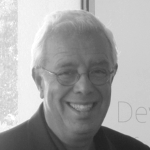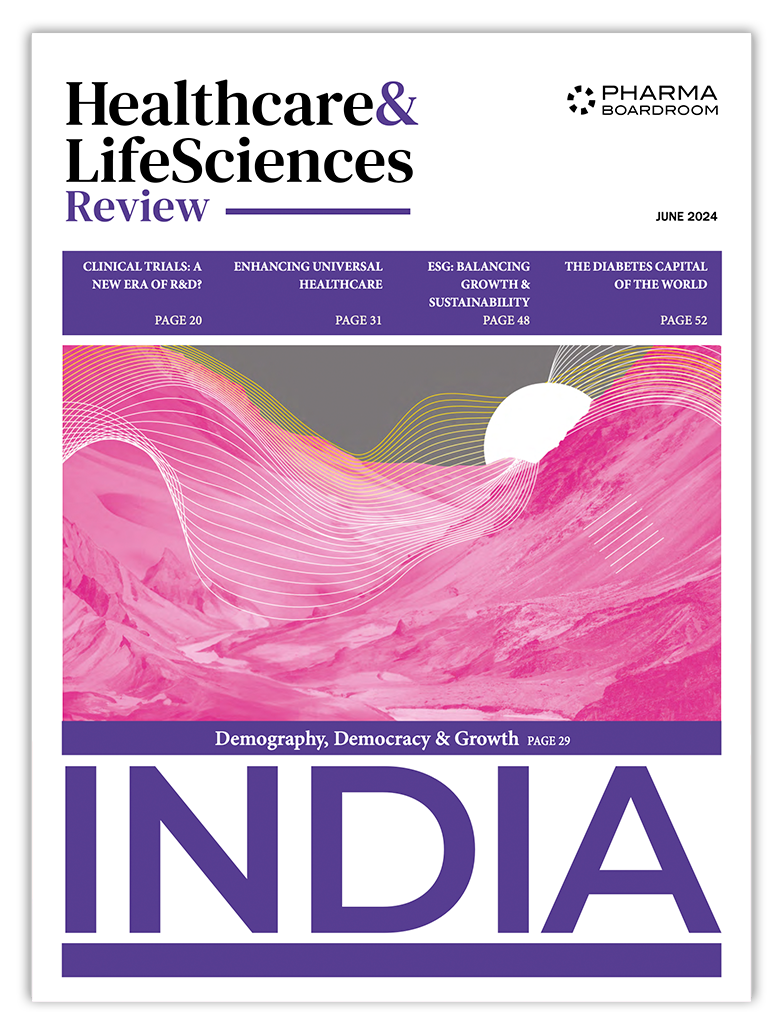Giacomo Di Nepi, CEO of innovative Swiss specialty pharma outfit Polyphor, discusses his decision to join the company in 2016, his main priorities, and the potential impact of an IPO in the next two years.
Having previously held senior leadership responsibilities with Takeda and Novartis, spending time as partner at McKinsey & Co., and most recently serving as executive VP and General Manager Europe for InterMune until its acquisition by Roche, why did you decide to come to Polyphor in 2016?
InterMune was a fantastic success story… I started from my home office as the only European employee and grew the company to 200 employees in Europe with eight offices in various countries, EUR 140m sales, and 50 percent annual growth.
After that, I sat on a few boards and advised several companies on strategy, which occupied my time, but working alone was not my thing; I missed having a team. Jerry Karabelas, chairman of the board at Polyphor asked me to advise the Board and later to become the CEO. Knowing the company, I felt that there was a tremendous opportunity to create something new because it is a company with a fabulous platform.
Most significantly, we invented a new class of antibiotics – the OMPTA (Outer Membrane Protein Targeting Antibiotics). A new class for Gram-negative pathogens had not been seen over the last 40 years. This is an area where there is an increasing and enormous medical need, and Murepavadin (POL7080) – a Pseudomonas-specific antibiotic, extremely active also against the resistant strains, and the frontrunner of this new class – is now entering Phase III. Also, the company was on the verge of changing its direction: we were an excellent research company, but we needed to become a pharmaceutical company, which completely changes the game. The company was somewhat in the middle of that process, and I thought I could have helped in steering the company in that direction.
Polyphor actually has some other compounds – could you please describe them?
We also have two other interesting compounds in addition to our antibiotics. One is a compound for combination therapy in oncology, where we are seeing a doubled response rate in advanced metastatic breast cancer patients compared to the regular treatment. And then we have POL6014, a very potent inhaled elastase inhibitor – a drug that could potentially improve cystic fibrosis and other respiratory diseases.
What were your priorities upon taking over the company a year ago?
We have two separate businesses, an innovative Discovery business where we operate in collaboration contracts with blue chip Pharma organizations and a Pharma development business, where we develop our own compounds. But the company was not set up this way and the two businesses were organizationally intertwined. The first thing I therefore did was to create two different business units. Usually when you create a new organization it is not a very popular decision in the first months. However, it went very smoothly. Perhaps our people wanted to please the new boss, but that effect usually doesn’t last too long! The reality was that it was a logical decision to take, hence why that new organization was welcomed by all staff at the time.
The two businesses have two different missions and strategies. The research collaboration business is basically a commercial business, so its mission is clear: improve revenues and profitability and serve our clients. These are our partners and you want to keep them close, with long and continuous relationships. In pharma, the strategy is completely different; you take a drug, you take it to the next development stage, and then you consider the opportunities available, if you want to find a partner for it, or if you want to keep it and take it to the next stage. If you want to find a partner, it is a very competitive process as you need to have as many bidders as possible. The skill sets are very different, so the decision to split the business units was very natural.
[Featured_in]
I then set other objectives when I joined. Firstly, I wanted to get our priorities straight in terms of which products we would greatly focus on. Antibiotics are certainly one of them, and then, for the other two products, although they are very promising, we simply cannot develop both at the same time as it would be too ambitious for an organization of our size – so at least one of them should be outlicensed. Secondly, I wanted to acquire new capabilities in pharma and establish some project management organization. The third goal was to secure some financing, which we did in April with a CHF 40 million round, as we need significant money to launch activities such as phase III developments in pharma.
What are the next steps for you at Polyphor?
Firstly, we want to accelerate the development of the pharma and antibiotic business. We will have our first patient for the Phase III Murepavadin program in Q1 2018. In addition, we want to develop a medium spectrum preclinical candidate from our new OMPTA class targeted at the most resistant species of Gram-negative bacteria . These pathogens are more difficult to tackle than the Gram-positive because they have two barriers instead of only one. We have found a way of tackling this barrier with a new mechanism of action binding to the outside membrane proteins. And we target all the most resistant strains of Klebsiella, E-choli, Aceinetobacter, Pseudomonas, Entreobacteriacee – where no other antibiotic is active.
We are also looking to an IPO (or some other form of financing) between 2018 or 2019,to raise the funds needed to complete the Phase III and the overall development program. We have a board with very strong financial skills, a new CFO with significant experience in the capital markets, and I participated as member of the IPO committee to the Euronext listing of GeNeuro, a company in Geneva where I serve on the Board– so I hope we will be able to effectively leverage our experience.
How opportune is it to be involved in this class of antibiotics at this time?
I think the time is getting right. In the past, antibiotics were a tough industry, and there was very little research done. What is happening now is that this is becoming a very serious medical problem; antimicrobial resistance by 2050 will kill more people than cancer. Given this, people are concerned. Institutions are reacting in a positive way, regulators are rethinking their approach because they realize that if they continue with the old approach they won’t see any new drugs on the market, and they don’t want that. The dialogue we have had with the FDA and EMA has been fantastic. They helped us design the trial because they really want to see the drug on the market. In addition, there are many available non-dilutive financing opportunities as well.
[related_story]
I think the market is also changing. There was a topic dedicated to antimicrobial resistance at the G20 in Hamburg, with Angela Merkel chairing and all the Health Care ministers. Prices were low in the past, but we are seeing that beginning to change now. Most antibiotic treatments were under USD 1000. Now we see prices 8-12 times higher in the most critical indications, such as Hospital pneumonia. The Antibiotics are also becoming more attractive to big pharma. And, I think we are uniquely positioned. The big buildup of resistance comes from Gram-negatives, and we are precisely focusing on them… which puts us in a good and promising position, and different from anyone else.
In fact, our drug in phase III, Murepavadin, is a pathogen specific antibiotic, and it fits well in the antibiotic stewardship initiative – a series of practices to reduce the use of antibiotics where not needed – and why should we shoot against many pathogens, as a broad spectrum does, when you have only one? We target specifically and only Pseudomonas. In addition, we are developing it in the highest-need medical indication, hospital-acquired pneumonia. This disease has a 30-40 percent mortality rate in the western world. With a resistant pathogen, this number climbs to 60 percent. These rates are unacceptable and way too high. Usually people develop drugs for UTIs and easy-to-treat indications – hence we target the difficult indication to maximize the benefit for both the patients and the company. Further, we are the only company involved in pathogen-specific medicine and, at the same time, middle-spectrum/broad-spectrum medicine in the area. And, not least, we have a new mechanism of action, when everyone else is developing new compounds of existing classes – likely to generate resistance much faster, as the pathogens know them. So we are very differentiated from other companies and very well positioned to take advantage of the change in the external scenario.
How would you define your partnership strategy?
Well, this varies widely for the two different businesses. For the discovery business, we are trying to build up long-term relationships with our clients. For example, we have clients we work with since 4-5 and more years – a sort of specialized external research for them, For Pharma, we are seeking a total or partial collaboration for our two compounds, POL6014, the elastase inhibitor for cystic fibrosis and other respiratory diseases, and for balixafortide (POL6326), our very promising combination oncology agent
While you well defined above the differentiation you have vs. competition in antibiotics, how would you define the competitive environment for Polyphor in the contract discovery business, and how do you distinguish yourselves from such competitors?
The competition comes from other service organizations, but we are quite different from them. Some of those companies have created a huge library of microcycles. They give the library to clients and say “select the compound that fits with your targets”. However, if it needs to be adapted, this is left to the company, and sometimes the company can do it, but sometimes it is quite difficult. We do the opposite; we have a smaller library because we decided not to make millions of compounds but try to define a matrix of ‘compound precursors’. We identify this with the client and we follow them throughout the whole market optimization process, which we can do very quickly and effectively. We hence have a very different business model. We can also tackle more therapeutic classes with a pre-defined matrix, and can give the client the end-product.
What do you expect to have achieved in five or six years’ time?
I expect our compounds to be available for the patients and saving their lives. Whether we will commercialize them or nor, too early to say. I certainly like it and made a living out of commercializing drugs, so it is something that I am not afraid of. That said, for the time being, that’s not really the main concern. Today, our goal is to build a pharma organization and then we will see. I certainly would like to see the drugs on the market, certainly a family of antibiotics but perhaps an oncology drug or a respiratory drug as well.







